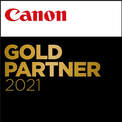Factors To Consider When Buying a Multifunction PrinterWhen buying a multifunction printer (MFP) for your business, several factors should be considered to ensure that you choose a device that meets your specific needs. Here are key factors to consider when purchasing a multifunction printer:
1. Printing Needs: - Volume: Determine the average monthly printing volume your business requires. Choose an MFP with a duty cycle that comfortably accommodates your printing demands. - Color vs. Monochrome: Decide whether color printing is essential for your business or if a monochrome MFP is sufficient. Color printers generally have higher upfront costs and operating expenses. 2. Print Speed and Quality: - Speed: Assess the printing speed, measured in pages per minute (ppm). Consider the workload of your business and choose an MFP with a speed that matches your requirements. - Quality: Evaluate the print quality for both text and graphics. Look for MFPs that produce sharp, clear prints, especially if your business requires high-quality output for marketing materials or presentations. 3. Scanning Features: - Resolution: Consider the scanning resolution of the MFP, especially if your business requires high-quality scans. Look for features like duplex scanning and an automatic document feeder (ADF) for efficient handling of multiple pages. 4. Copying Features: - Duplex Copying: Assess whether the MFP offers duplex copying for double-sided documents. Consider additional features like resizing, collating, and other copying capabilities that align with your business needs. 5. Faxing Options: - Fax Functionality: If faxing is a requirement, ensure that the MFP has faxing capabilities. Evaluate features such as speed dial, memory capacity, and the ability to send and receive faxes efficiently. 6. Connectivity Options: - USB, Ethernet, Wi-Fi: Check the connectivity options. Ensure that the MFP supports the necessary connections for your office setup, including USB, Ethernet, Wi-Fi, and mobile printing capabilities. - Cloud Printing: Consider whether the MFP supports cloud printing solutions, allowing for greater flexibility and accessibility. 7. Paper Handling: - Paper Types and Sizes: Assess the paper handling capabilities. Look for MFPs with multiple paper trays, adjustable paper sizes, and compatibility with different paper types to meet your printing needs. 8. User Interface and Ease of Use: - Touchscreen Interface: Evaluate the user interface of the MFP. A touchscreen interface can enhance ease of use. Look for intuitive menus and controls to simplify operation for all users. 9. Security Features: - User Authentication: Consider security features such as user authentication to control access to the MFP. - Data Encryption: Evaluate whether the MFP supports data encryption for secure transmission of sensitive information. - Secure Print Release: Look for features like secure print release, which ensures that confidential documents are only printed when the user is physically present. 10. Maintenance and Support: - Warranty and Support: Check the warranty terms and availability of support options. Inquire about the responsiveness of customer support and the availability of service contracts or extended warranties. 11. Energy Efficiency: - Energy Star Certification: Look for MFPs with Energy Star certification, indicating energy efficiency. Features such as automatic power-off or sleep mode can contribute to reduced energy consumption. 12. Mobile Printing Options: - Mobile App Compatibility: If mobile printing is important, ensure that the MFP supports mobile printing technologies. Look for compatibility with mobile apps, wireless printing, and cloud printing solutions. 13. Software Integration: - Compatibility with Software: Assess the MFP's compatibility with your existing software and workflow. Consider whether it integrates seamlessly with document management systems, accounting software, and other business applications. 14. Brand Reputation: - Reliable Brands: Consider the reputation of the MFP manufacturer. Reliable brands often offer better build quality, support, and a wider range of features. Read user reviews and testimonials to gauge customer satisfaction. 15. Total Cost of Ownership (TCO): - Initial and Ongoing Costs: Calculate the total cost of ownership, including initial purchase price, consumables (toner or ink cartridges), maintenance costs, and energy consumption over the expected lifespan of the MFP. 16. Firmware and Software Updates: - Regular Updates: Inquire about the availability of firmware and software updates. Regular updates from the manufacturer can improve performance, address security vulnerabilities, and add new features. 17. Future Growth Considerations: - Scalability: Choose an MFP that can scale to accommodate potential future growth in your business. Consider the ability to add additional features, upgrade memory, or handle increased printing volumes. 18. Lease Options: - Lease Availability: Explore leasing options if the upfront cost is a concern. Leasing allows you to acquire the equipment with minimal initial investment and may include maintenance and support. 19. Testing Before Purchase: - Trial Period: If possible, test the MFP before making a final decision. Ensure that it meets your performance expectations and integrates seamlessly into your office workflow. 20. Compliance and Regulations: - Regulatory Compliance: Ensure that the MFP complies with relevant industry regulations and standards, especially if your business handles sensitive information. By carefully considering these factors, you can select a multifunction printer that aligns with your business needs, enhances productivity, and provides reliable performance. Take the time to assess each aspect to make an informed decision that supports your office's printing and document management requirements.
0 Comments
Leave a Reply. |
AuthorFSM Solution Archives
December 2023
Categories |
- Home
- Online Store
-
Products
- Office Printer
- Interactive White Board
- FujiFilm Photocopy Machine
- Recondition Photocopier
- Production Printer
- A1 A0 Plan Printer
- Large Format Printer
- Large Format Scanner
- Document Scanner
- Fax Machine
- Projector
- Roll Sticker Label Cutter And Waste Removal
- Sheet & Roll Flatbed Cutter
- Production CNC Cutter
- Form Board Printer
- Art Card Printer
- Roll Art Card Printer
- Roll Sticker Printer
- T-Shirt Printer
- UV DTF Sticker Printer
- Software
- Services
- Support
- About Us
- Home
- Online Store
-
Products
- Office Printer
- Interactive White Board
- FujiFilm Photocopy Machine
- Recondition Photocopier
- Production Printer
- A1 A0 Plan Printer
- Large Format Printer
- Large Format Scanner
- Document Scanner
- Fax Machine
- Projector
- Roll Sticker Label Cutter And Waste Removal
- Sheet & Roll Flatbed Cutter
- Production CNC Cutter
- Form Board Printer
- Art Card Printer
- Roll Art Card Printer
- Roll Sticker Printer
- T-Shirt Printer
- UV DTF Sticker Printer
- Software
- Services
- Support
- About Us
Online Store
Product |
Services |
Authorized Sales & Services
|
Contact Us |
Copyright © 2024 FSM Solution Sdn Bhd. All Rights Reserved.


 RSS Feed
RSS Feed














